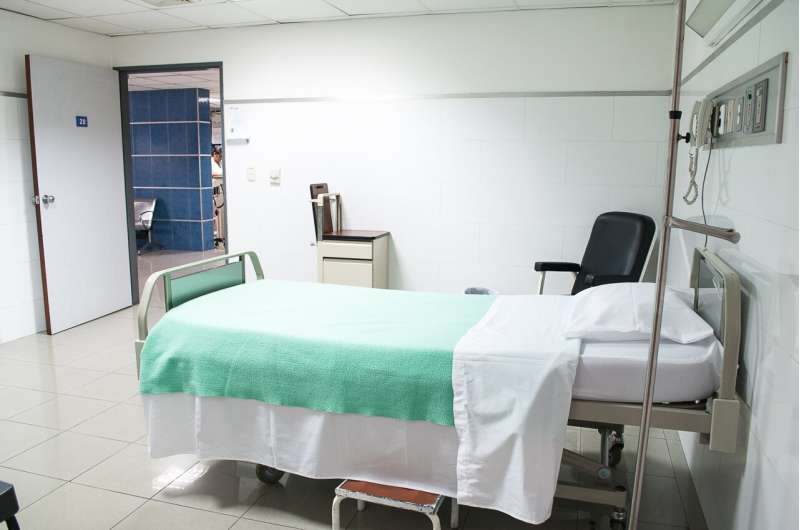This article has been reviewed according to Science X's editorial process and policies. Editors have highlighted the following attributes while ensuring the content's credibility:
fact-checked
peer-reviewed publication
trusted source
proofread
Top ten steps to improve in-hospital cardiac arrest outcomes and care identified

Worldwide, cardiac arrest among hospitalized people of all ages is a high-risk event associated with significant disease and death. To address a growing need to improve the quality standards for responding to an in-hospital cardiac arrest (IHCA), the International Liaison Committee on Resuscitation (ILCOR) has identified 10 steps that can lead to better patient outcomes and survival.
These steps can be embedded in a system of care that includes plans and preparations for IHCA; prevention of IHCA when avoidable; implementation of effective resuscitation education and training; the delivery of high-quality guidelines-based resuscitation care; and ongoing evaluation and adjustments for improvements within a culture of person-centered care.
This research will be presented in a plenary session at the American Heart Association's Resuscitation Science Symposium 2023. The meeting, held Nov. 11–12, 2023, in Philadelphia, is a global exchange of the latest scientific advances related to treating cardiopulmonary arrest and life-threatening traumatic injury. It has also been published in Circulation: Cardiovascular Quality and Outcomes.
Formed in 1992, ILCOR unites leading resuscitation organizations worldwide. Members include The American Heart Association, the European Resuscitation Council, the Heart and Stroke Foundation of Canada, the Australian and New Zealand Committee on Resuscitation, the Resuscitation Councils of Asia, the Indian Resuscitation Council Federation, and the collaborating organization, International Federation of Red Cross.
"Over the last 10 months, writing group members have been meeting to brainstorm, research, discuss and refine goals that reflect a global, comprehensive and practical approach to improving IHCA care," said Robert Greif, M.D., MME, FERC, FEAMS, professor emeritus at the University of Bern in Switzerland.
"We're hopeful that institutions and health systems will use these steps, prioritizing them by what each system needs to achieve the highest improvements in their IHCA care. This publication is in line with ILCOR's vision to save more lives globally through resuscitation and case studies of success, tools for implementation and teaching approaches that will follow soon."
People who experience IHCA require coordinated, effective care from the start of hospital admission through when they are discharged. Researchers hope the guidance outlined in these 10 steps can provide the framework health care institutions use to assess where there are gaps, systematically approach those gaps with evidence-based best practices and build a community committed to transforming the care of people who experience IHCA.
The 10 steps to improve in-hospital cardiac arrest outcomes and quality of care:
Plan and prepare
- Build and support governance and infrastructure for a resuscitation program.
- Collect data to measure and improve resuscitation processes and outcomes.
- Implement effective education and training for resuscitation.
Prevent
- Establish patient and family goals of treatment early and reassess often.
- Stop preventable in-hospital cardiac arrest.
Perform
- Develop and deploy an effective resuscitation response system.
- Deliver guideline-based resuscitation care.
- Deliver guideline-based, post-cardiac arrest care.
Principles and Culture
- Implement a person-centered culture of excellence in care.
- Ensure the well-being of health care professionals.
The 10 steps identified in this research represent the consensus of a writing group including more than 30 multidisciplinary experts in the health care field and an external advisory group. This work builds upon efforts of the Global Resuscitation Alliance, which aims to improve the rates of resuscitation efforts through community-based programs that continually monitor and measure activations to enhance effectiveness.
"Nearly 300,000 cardiac arrests occur in hospitals in the United States each year, and only about 25% of people survive to hospital discharge after these types of events. There is consistent evidence that the quality of care around IHCA remains suboptimal and varies across hospitals in the U.S. and in countries around the world," said Comilla Sasson, M.D., Ph.D., FAHA, who served on the ILCOR group and is a practicing emergency medicine physician and vice president for health science at the American Heart Association.
"Now that we have a framework for the 10 steps to improve IHCA survival, health care institutions can use a systematic approach to plan and prepare with data collection and effective education and training, prevent IHCA and establish goals of care early, perform and deliver evidence-based resuscitation care, and build a culture of excellence for patients, families and the health care professionals who care for them."
This expert writing group hopes that the identification of these goals will assist hospitals and health systems to establish, support, reinforce, evaluate and improve their resuscitation systems for IHCA with the aim of enhancing survival outcomes, ensuring quality care and fostering continuous improvement.
See the full statement for more in-depth detail of how these steps can be implemented.
More information: Brahmajee K. Nallamothu et al, Ten Steps Toward Improving In-Hospital Cardiac Arrest Quality of Care and Outcomes, Circulation: Cardiovascular Quality and Outcomes (2023). DOI: 10.1161/CIRCOUTCOMES.123.010491




















